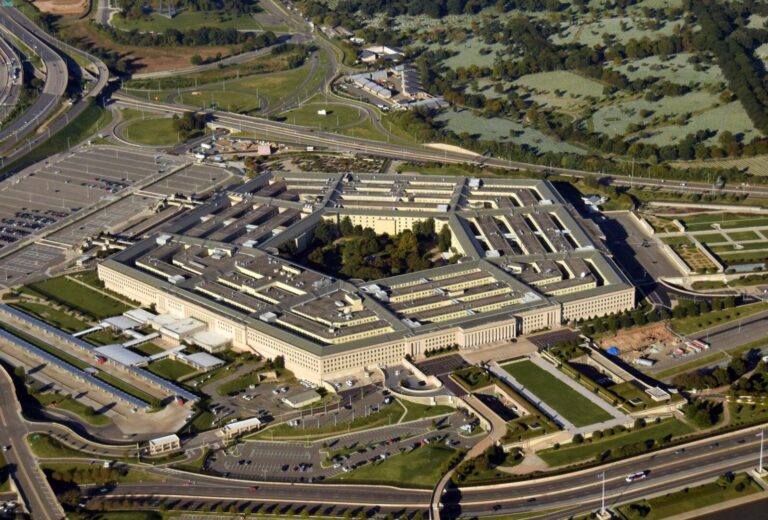The Pentagon is currently reviewing a pivotal agreement to equip Australia with nuclear-powered submarines, marking a significant development in the strategic partnership between the two nations. This move, reported by The New York Times, underscores growing concerns over regional security and the shifting dynamics in the Indo-Pacific. As the review unfolds, it highlights the complexities involved in transferring advanced military technology and the broader implications for U.S.-Australia defense cooperation.
Pentagon Evaluates Strategic Implications of Nuclear Submarine Deal with Australia
The Pentagon is actively assessing the strategic ramifications following the agreement to supply Australia with nuclear-powered submarines. This initiative, a cornerstone of deepening defense collaboration in the Indo-Pacific region, seeks to enhance deterrence capabilities amid rising geopolitical tensions. Key considerations include regional stability, alliance dynamics, and the balance of power with China. Officials are analyzing how this transfer will impact existing military postures and diplomatic relationships, emphasizing long-term security goals over short-term gains.
Among the factors under review are:
- Technology transfer protocols ensuring sensitive information is protected
- Operational integration with U.S. and allied naval forces
- Impact on nuclear non-proliferation treaties and international scrutiny
- Strategic messaging to both allies and adversaries in the region
| Aspect | Considerations | Potential Outcome |
|---|---|---|
| Regional Security | Countering Chinese naval expansion | Enhanced deterrence |
| Alliance Strengthening | Closer U.S.-Australia military coordination | Improved interoperability |
| Non-Proliferation | Compliance with treaties | Maintaining global norms |
Assessment Focuses on Technological Transfer and Regional Security Dynamics
The Pentagon’s careful evaluation of the proposed submarine deal signals a broader strategic recalibration in the Indo-Pacific region. Central to the assessment is the intricate process of transferring sensitive nuclear propulsion technology to Australia, a first for the United States with an ally outside NATO. Officials are closely examining the safeguards necessary to maintain technological advantages while ensuring that classified information remains protected. This scrutiny extends beyond technical logistics to encompass the legal frameworks governing nuclear materials, as well as the long-term implications for bilateral defense cooperation.
The deal also profoundly impacts regional security calculations, particularly with China’s growing maritime assertiveness in the South China Sea and beyond. Experts highlight several key factors shaping this dynamic:
- Enhanced deterrence: Australia’s nuclear-powered submarines are expected to bolster undersea warfare capabilities, contributing to a strategic balance.
- Alliance interoperability: The integration of advanced submarine platforms emphasizes closer defense ties among the US, Australia, and allied partners in the region.
- Regional reactions: Neighboring countries are monitoring the move closely, with some voicing concerns over escalation and an arms race.
| Aspect | Potential Impact | ||||||||||||
|---|---|---|---|---|---|---|---|---|---|---|---|---|---|
| Technology Transfer | Strengthened US-Australia tech collaboration; risk of info leaks closely managed | ||||||||||||
| Regional Security | Heightened deterrence vis-Ã -vis China’s naval expansion; increased strategic competition | ||||||||||||
| Diplomatic Considerations | Recommendations Urge Enhanced Collaboration and Transparent Communication with Pacific Allies
Experts highlight the critical need for a unified approach among the United States and its Pacific partners to ensure strategic stability amid evolving regional dynamics. They advise that enhanced collaboration should prioritize transparency in both military planning and diplomatic communications to avoid misunderstandings that could escalate tensions. Building trust through regular joint exercises and information-sharing platforms is essential as the nuclear submarine deal marks a significant shift in regional defense postures. Key recommendations stress that alliance cohesion relies on addressing concerns from all stakeholders with openness and accountability. Analysts propose the following focus areas to strengthen the partnership:
Insights and ConclusionsAs the Pentagon reviews the deal to equip Australia with nuclear-powered submarines, the development marks a significant pivot in U.S. strategic commitments in the Indo-Pacific region. The outcome of this review will not only shape the future of U.S.-Australia defense cooperation but also has the potential to alter the regional security landscape amid growing geopolitical tensions. Stakeholders and observers around the world will be closely watching for the next steps in this evolving partnership. |




